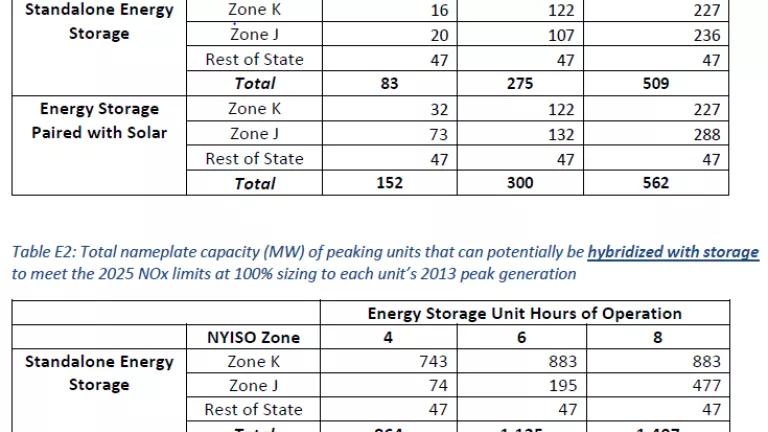
There is a notable new report, The Potential for Energy Storage to Repower or Replace Peaking Units in New York State, from the New York Department of Public Service Staff, in consultation with the New York State Energy Research and Development Authority (NYSERDA), the Long Island Power Authority (LIPA), the New York Independent System Operator (NYISO), the New York Department of Environmental Conservation (DEC), and Con Edison. The report, which was initiated as part of the storage order from the Public Service Commission in December 2018, show that there are a number of power plants in New York City and Long Island that are candidates to be fully replaced by the output of electricity storage batteries or batteries and solar because they run very infrequently (less than 10 percent of the time, and for very few hours each time each time they started) and have very heavy emissions (based on their operations in 2013, which had the most electric system peaks of recent years).
The biggest news from the study is that 743 MW of dirty ‘peaker’ plant capacity on Long Island and 74 MW of such capacity in NYC could be “hybridized” with batteries capable of holding 4 hours of charge to meet the strict limits proposed by the Department of Environmental Conservation that will come into effect in 2025. This means that the batteries could offset a portion of the output of the dirty peaker plants, balanced in such a way that the total pounds of nitrogen oxides per megawatt-hour (MWh) of electricity are below the limits set in new upcoming regulations from the DEC. Batteries can also entirely displace generation from some plants. The study estimates that 20 MW of capacity could be fully replaced in NYC and 16 MW on Long Island. If there were batteries installed that operated for six hours, those numbers would be 107 MW in NYC, 122 MW on Long Island for replacement and 195 MW in NYC and 883 MW on Long Island for hybridization.
These numbers set forth potential and are not guaranteed. The business decisions of the plant owners will be based on their individual economic analyses, and their expectations for the rapidly evolving electricity market in downstate New York. But these numbers provide a scope of the magnitude of the potential for deployment of storage, and it’s looking good.
Now with this analysis and previous analyses (some of them discussed here), there’s a solid record to show that we’re on the road to our future grid, with a cleaner, better, more flexible generation mix. And the market is already poised to act to make quick progress toward the state’s goal to deploy 3000 MW of energy storage by 2030: Con Edison just released a final version of a request for proposals to provide 300 MW of large scale storage by the end of 2022; owners of dirty peaker plants have stopped using the dirty generators, and have proposed installing hundreds of MW of battery storage; and, the NY-Sun program that provides incentives for solar projects now includes incentives for combined solar and storage projects, including the state’s strongest solar market, Long Island.
To capture the great potential outlined in this Repowering or Replacement report, further support is needed to push this burgeoning industry further on the fast track, and market barriers must be eliminated. As my colleague, Arjun Krishnaswami writes in a recent blog, we need more research and development to accelerate the development, variety, duration, and falling costs of storage technologies and many members of Congress are focused on doing so. And as my colleague Miles Farmer writes in this blog, there are also currently serious flaws in New York’s electricity market rules that could impede the deployment of storage, with the grid operator, NYISO, proposing serious constraints to the participation of storage resources in the wholesale market where utilities will buy grid services from large storage arrays.
Collectively, we’re on our way to building out the pieces of infrastructure that all need to be in place to reach our awesome—in all senses of the word—New York climate goals.

